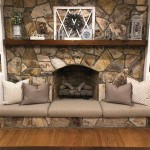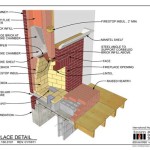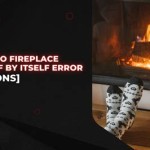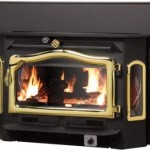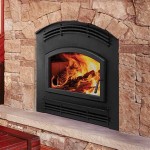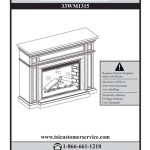Brick Fireplace TV Mount: A Comprehensive Guide
Mounting a television above a brick fireplace has become a popular design choice, offering a focal point for living rooms and entertainment spaces. This configuration, however, presents unique challenges compared to mounting on drywall or other standard wall surfaces. Brick, being a hard and often uneven material, requires specific tools, techniques, and considerations to ensure a secure and aesthetically pleasing installation. This article provides a detailed guide to navigating those challenges and achieving a successful brick fireplace TV mount.
Assessing the Fireplace and Surround
Before commencing any installation work, a thorough assessment of the fireplace and its surrounding structure is crucial. This involves examining the brick itself, the mortar joints, and the overall construction of the fireplace. These factors significantly influence the choice of mounting hardware and installation methods.
The type of brick used in the fireplace is a primary consideration. Some brick is soft and porous, while others are dense and hard-fired. Softer brick may crumble or crack under pressure, necessitating careful drilling and anchor selection. The condition of the mortar is equally important. Weak or crumbling mortar joints offer inadequate support and may require repair or reinforcement before mounting. The consistency of the mortar also factors into drilling technique. Newer mortar may be easier to drill into than older, more compact mortar.
In addition to the brick and mortar, the overall fireplace construction needs evaluation. Is the fireplace a veneer over a wooden frame, or is it a solid masonry structure? Identifying the underlying material is essential for choosing appropriate mounting hardware. Veneer fireplaces may require special anchors that can penetrate the brick and grip the underlying wood frame. Furthermore, the depth of the mantel, if present, must be considered. A deep mantel may obstruct the view of the television or interfere with the mounting bracket.
The presence of a firebox is another significant factor. Directly mounting a television above a frequently used firebox can expose the electronics to excessive heat, which can damage the television and void its warranty. Adequate heat shielding or alternative mounting locations may be necessary. Consideration should also be given to the routing of power cords and signal cables. Hiding these cables within the brickwork or behind the television creates a cleaner, more professional appearance. However, drilling through brick for cable management requires additional planning and execution.
Selecting the Right Mounting Hardware and Tools
Choosing the appropriate mounting hardware and tools is paramount for a secure and lasting installation. The weight and size of the television are primary determinants in selecting a suitable mounting bracket. The bracket should be rated to support at least the weight of the television, with a safety factor of 2-3 times the weight. For heavier televisions, consider a full-motion mount that allows for tilting and swiveling, providing flexibility in viewing angles.
Anchor selection is critical when mounting to brick. Standard drywall anchors are unsuitable for brick due to their inability to grip the hard, uneven surface. Wedge anchors, sleeve anchors, and concrete screws are common choices for brick installations. Wedge anchors are strong expansion anchors that provide a secure hold in solid brick. Sleeve anchors are another type of expansion anchor that can work well in brick and mortar. Concrete screws are self-tapping screws designed specifically for use in concrete and masonry. The choice of anchor depends on the type of brick, the thickness of the mortar joints, and the weight of the television.
In addition to anchors, specialized drill bits are essential for drilling through brick. Carbide-tipped drill bits are designed to withstand the abrasive nature of brick and mortar. Using a standard drill bit can quickly dull the bit and make the drilling process much more difficult. A hammer drill is also recommended. The hammer action helps the drill bit penetrate the brick more effectively. However, excessive pressure should be avoided, as it can crack the brick. Start with a pilot hole using a smaller drill bit and then gradually increase the size until the desired diameter is achieved.
Other necessary tools include a level, stud finder (to locate framing behind brick veneer if applicable), measuring tape, pencil, socket wrench or adjustable wrench (for tightening anchors), and a vacuum cleaner for removing dust and debris. Safety glasses and gloves are also essential for protecting the eyes and hands during the installation process. A wire fish or coat hanger may be necessary for routing cables through the brickwork.
Installation Process: Step-by-Step Guide
Following a systematic and careful installation process is essential for achieving a successful and safe brick fireplace TV mount. The following steps outline a general procedure, but it is always recommended to consult the manufacturer's instructions for both the television and the mounting bracket.
Step 1: Planning and Marking. Begin by determining the desired location for the television. Use a level and measuring tape to mark the precise location of the mounting bracket on the brick. Ensure that the television will be centered above the fireplace and at a comfortable viewing height. Mark the locations of the mounting holes on the brick using a pencil. Use a stud finder to locate any wooden framing behind the brick veneer, if applicable. If framing is found behind a veneer, the mounting solution can include lag bolts anchored in the framing for added support.
Step 2: Drilling Pilot Holes. Using a hammer drill and a carbide-tipped drill bit of the appropriate size, drill pilot holes at the marked locations. Start with a smaller drill bit and gradually increase the size to the diameter required for the chosen anchors. Apply steady, even pressure while drilling, and avoid excessive force, which can crack the brick. If drilling into mortar joints, take extra care to avoid crumbling. Periodically vacuum away dust and debris to maintain a clear view of the drilling progress.
Step 3: Installing Anchors. Insert the chosen anchors into the drilled holes. For wedge anchors, insert the anchor body into the hole and then use a hammer to drive the wedge into the anchor. For sleeve anchors, insert the anchor body and then tighten the nut to expand the sleeve. For concrete screws, simply screw them into the drilled holes using a socket wrench or adjustable wrench. Ensure that the anchors are flush with the brick surface. Over-tightening can strip the threads or damage the brick.
Step 4: Mounting the Bracket. Attach the mounting bracket to the anchors using the provided hardware. Ensure that the bracket is level and securely fastened to the wall. Tighten all bolts and screws firmly, but avoid over-tightening. Double-check the stability of the bracket before proceeding.
Step 5: Attaching the Television. Attach the television mounting plates to the back of the television according to the manufacturer's instructions. Carefully lift the television and attach it to the mounting bracket. Secure the television to the bracket using the provided locking mechanisms. Ensure that the television is securely attached and stable before releasing it.
Step 6: Cable Management. Route power cords and signal cables to the television. Consider using cable ties or cable sleeves to keep the cables organized and out of sight. If drilling through brick for cable management, use a larger drill bit to create a channel for the cables. Use a wire fish or coat hanger to guide the cables through the channel. Seal the channel with caulk or sealant to prevent drafts and moisture from entering.
Step 7: Testing and Adjustments. Turn on the television and test all functions to ensure that it is working properly. Adjust the angle of the television as needed to achieve the desired viewing angle. Double-check all connections and tighten any loose screws or bolts.
Step 8: Final Inspection. Conduct a final inspection of the installation to ensure that everything is secure and aesthetically pleasing. Clean up any dust and debris from the installation process. Ensure that all cables are properly managed and hidden from view. The television should be centered above the fireplace and at a comfortable viewing height. The mounting bracket should be level and securely fastened to the wall.
Mounting a television above a brick fireplace can be a challenging but rewarding project. By carefully assessing the fireplace, selecting the right hardware and tools, and following a systematic installation process, a secure and aesthetically pleasing result can be achieved. It is always advisable to consult with a professional installer if any doubts or concerns arise during the process.
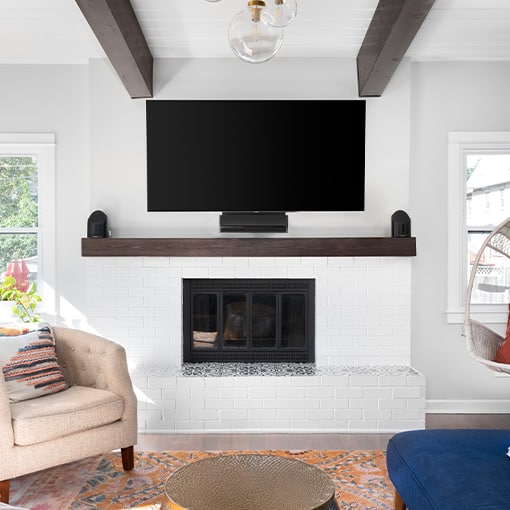
Can I Mount My Tv Above The Fireplace

How To Mount A Tv Over Brick Fireplace And Hide The Wires Designing Vibes Interior Design Diy Lifestyle

How To Mount Tv On Brick Fireplace Wall Step By The Men

Brick Fireplace Designs Photos Tv Mount Onto Integrity Building Gallery Wall

Can I Mount My Tv Above The Fireplace

Flat Screen Tv Mounting Over Brick Fireplace South Hampton Ny

Your Tv Doesn T Belong Over The Fireplace Cnet

Flat Screen Tv Mounting Over Brick Fireplace South Hampton Ny

How To Mount A Tv Over Fireplace Vertical Chimney Care

How To Hide Tv Wires Over A Brick Fireplace Cachet Homes
Related Posts

